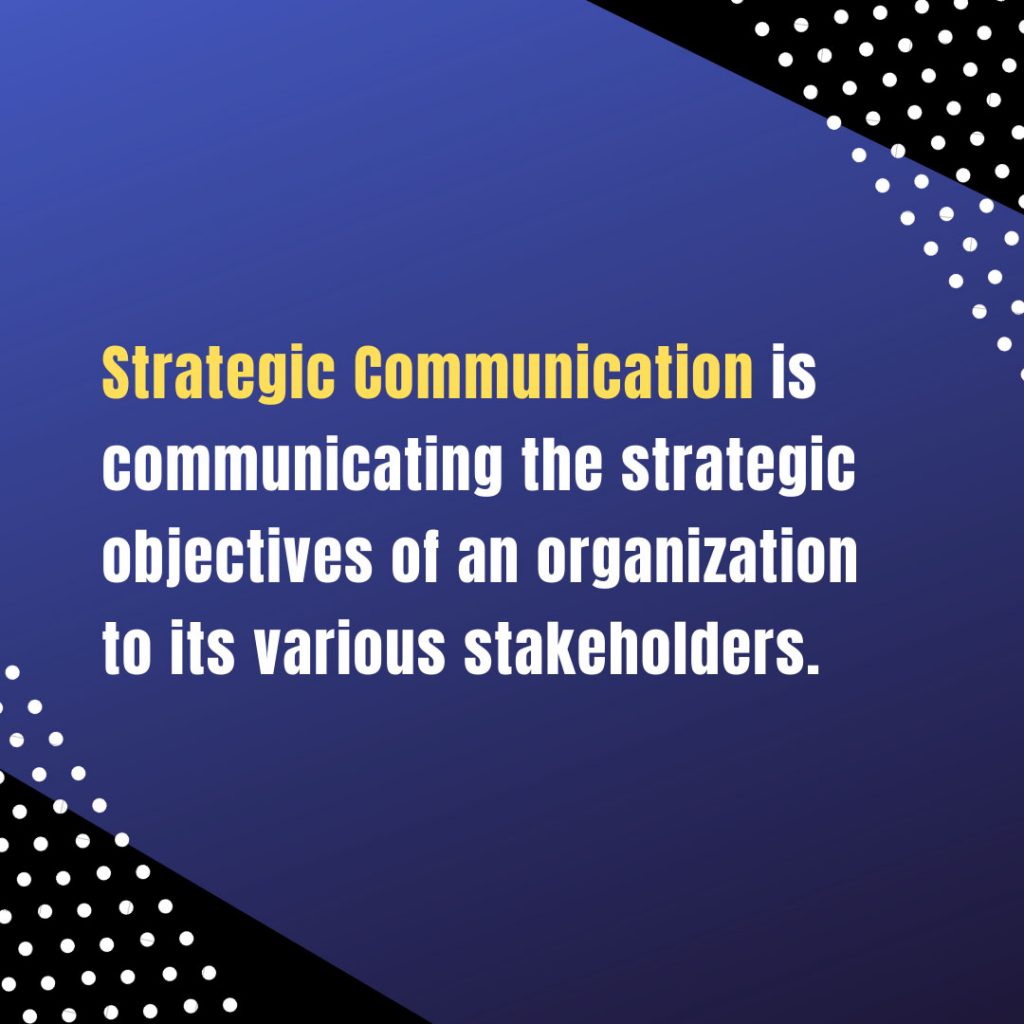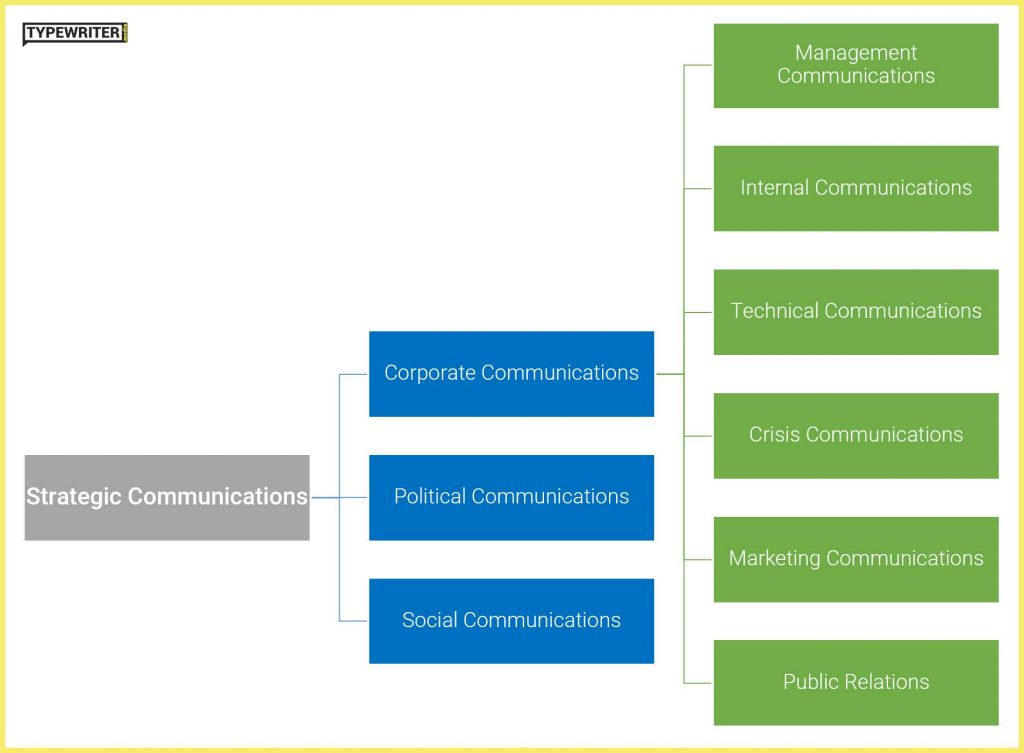One simple Google search and you will understand that none of the results on the first two pages give a clear or concise definition of what is strategic communications.
Hopefully, we bring an end to that confusion today.
What is Strategic Communication?
Kirk Hallahan and others, define strategic communications as the purposeful use of communication by an organization to fulfill its mission.
In our own words, strategic communication is communicating the strategic objectives of an organization to its various stakeholders (investors, shareholders, business partners, employees, customers, government, etc.)

The mode of communicating with each of these stakeholders might be different.
For example, communicating with investors, shareholders and business partners would consist more of corporate communications.
Communicating with customers would consist more of marketing communications.
Communicating with employees would consist of internal communications, and so on.
The primary thing to understand is that strategic communications is more of an overarching entity, implementing various other types of communication strategies under it.
As Kirk explains in his paper – organizations vie for the attention, admiration, affinity, alignment, and allegiance of constituents of all sorts.
In so doing, organizations make strategic decisions about the level and nature of resources they will devote to such efforts.
Components of Strategic Communications
Strategic communication involves a great deal of planning, vision, commitment and analysis.
It is not just about sending out a tweet, or a press release to the public or hosting a clever social media campaign. You need to set an achievable goal, have a clear intention and be mindful of the implications.
In the industry, the borders between corporate communications, strategic communications, public relations, marketing communications etc., are blur. Depending on the industry and even on a company’s business goals, many of these are used interchangeably.
In our understanding of both industry and academic literature, and practical experience, we consider strategic communication as a broader overarching entity consisting of the below components.

Adding to Kirk’s work, for the corporate sector, strategic communications has the following components:
- Management Communications
- Managerial and administrative communication within the organization pertaining to day to day operations and functioning.
- Internal Communications
- Employee communications, intranet, change management within the organization etc.
- Technical Communications
- Primarily to and from the technical/engineering team. Communications around the technology adaptation and practice within the organization.
- Crisis Communications
- Communication around protection and sustenance of the organization’s reputation and identity, in times of an unprecedented event that might lead to negative publicity.
- It is of preventive and preparatory nature and not reactionary.
- Marketing Communications
- Communication around awareness, promotions and sales of the organization’s products and services. Also includes customer retention and customer-service related communication.
- For non-profits, this might also include communication around fundraising.
- Public Relations
- Communication around the public perception of the organization.
- Stakeholders include customers, consumers, investors, donors, employees, government, community etc.
And two further components, not usually included in a private organization’s structure as:
- Political Communications
- Communication around government affairs and government initiatives.
- Usually aimed towards the exercise of political power or allocation of resources to the society.
- On an international level, it also includes diplomacy and military stabilization.
- Social Communications
- Communication around the promotion of social welfare campaigns/information.
- Informative in nature.
- Initiators include governmental or non-governmental organizations, voluntary organizations or corporates involved in social welfare campaigns.
Do you have a different opinion compared to what we have written above? Or do you resonate with our findings?
We will be happy to hear from you in the comments below. Cheers.
Want to join our small but awesome community? Just drop in your email below and we’ll buzz you in.
Photo by JESHOOTS.COM on Unsplash



